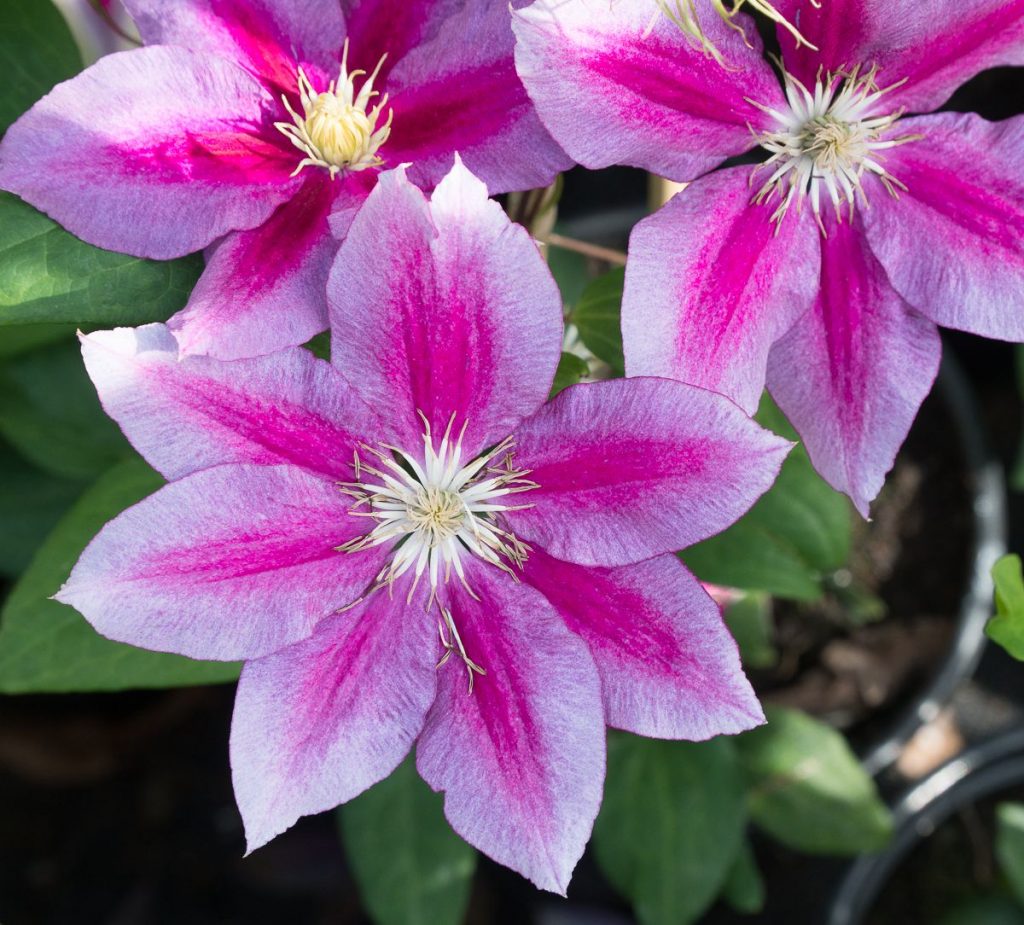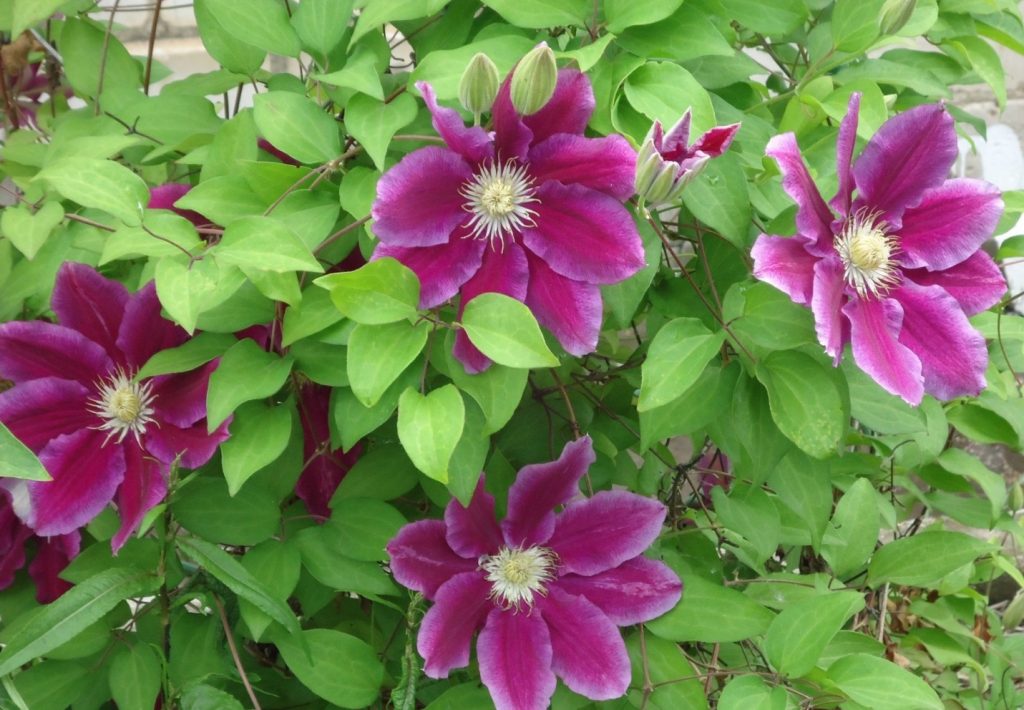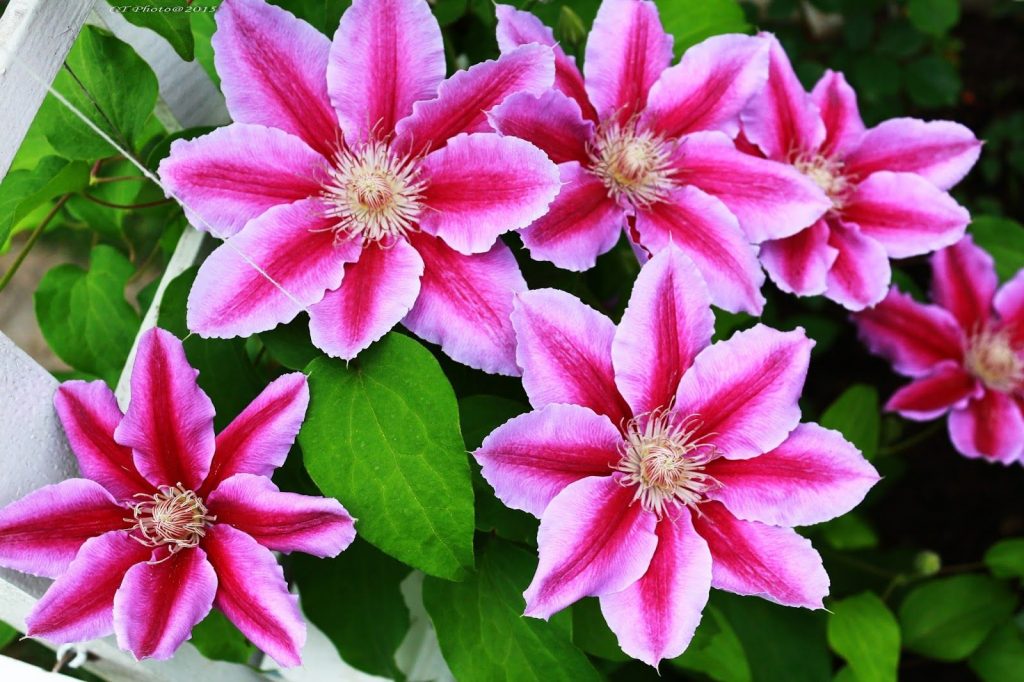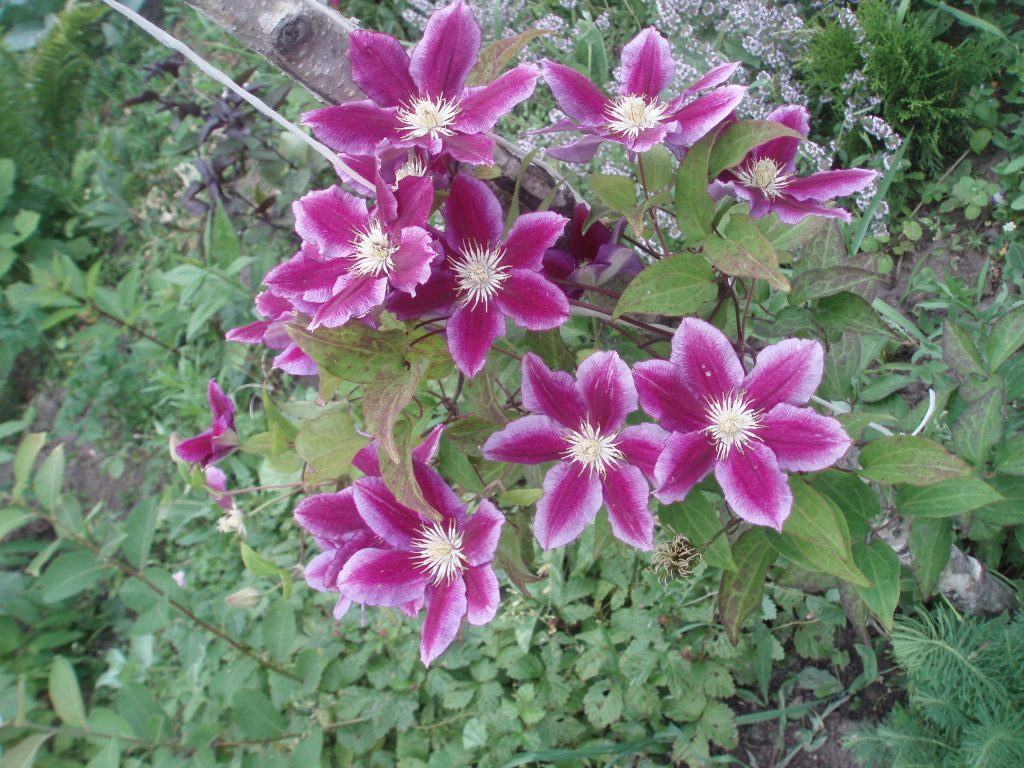Clematis Hania - description of the plant
Clematis Hania is a Polish hybrid variety. It was bred in 2000 by the originator S. Marchinski, and in 2002 it received a bronze prize at an exhibition in Holland. Due to its delightful bloom and easy growing, the flower is popular among gardeners and is often used in landscaping.

Photo of clematis hanna
Description of the variety
Clematis Hania is an ornamental large-flowered perennial from the Buttercup family. The plant reaches a height of 2-2.5 m. The leaves are opposite, their color is rich green, the shape is oval with a pointed tip.
The flowers are large, up to 15-17 cm in diameter. The petals are bright red or crimson with a lighter pink edging. In the center are golden yellow stamens. Flowering includes two stages - May-June and August.
Landing features
Seedlings with an open root system are planted in late April or early May. Container plants can be replanted later - in summer or autumn.
For planting, they choose a place protected from the wind, with a deep occurrence of groundwater (otherwise, an embankment is built and good drainage is laid).
Clematis is suitable for light partial shade, southwest or southeast sides of the site.
The soil should be light, loose, fertile, with a neutral reaction. The flower in the container must be placed in a container with lukewarm water for 20-30 minutes so that the earthy lump is well saturated with moisture.
The planting hole is dug to a depth and width of 60 cm, taking into account the distance to walls and other plants (at least 50 cm).
Technology:
- At the bottom of the planting pit, drainage from pebbles, gravel or broken brick is poured (layer thickness - 8-12 cm).
- The removed soil is mixed with compost, chalk, ash (you can add superphosphate).
- The soil mixture is placed in a hole, poured with a bucket of water and waiting for shrinkage.
- The seedling is deepened into the soil by 4-10 cm (the heavier the soil, the deeper), tamped and watered again.
- The near-trunk circle of the plant is mulched with pieces of tree bark.
Care
Clematis needs care, but caring for him is not too difficult. He needs regular watering, feeding and pruning, as well as shelter for the winter.

Clematis Hannah description
The loosening procedure can be replaced by mulching (long-lasting pine mulch will last for a plant for several years).
Watering
The flower loves moisture, especially in the first year after transplanting. Watering is carried out 1-3 times a week, depending on the weather and temperature.
Young plants are watered with one bucket of water. As it grows, the volume of liquid is increased to 3-4 buckets.
Top dressing
In the first season, clematis is not fed (it has enough fertilizers laid down during planting). Spring feeding is carried out in April, using complex formulations for flowering plants (they are also applied after pruning).
During the formation of buds, you can please the vine with potassium, and after flowering - with phosphorus.
Loosening and mulching
Loosening is carried out after watering to improve oxygen access to the roots.Simultaneously with this procedure, weeds are pulled out. To facilitate maintenance, you can apply mulching. Pieces of pine bark are used as mulch, filling them with a layer of 5-6 cm.
Trimming group
The Chania variety appears in the list of clematis of the second pruning group. The procedure is carried out twice — after each of the flowering stages (in June and September-October).
For the first time, shoots and seedlings are cut off so that new flowers bloom no less magnificently. In autumn, the bush is cut more radically, leaving 1-1.5 m from the ground.
Preparing for winter
Clematis needs to be sheltered for the winter, but not so much from the cold as from dampness. The tillering center must remain dry. It is covered with spruce paws and woody leaves (preferably oak) or foam. A plastic wrap is fixed on top.
Tying
To prevent tall stems from breaking from the wind, you need to think over a support for clematis. They begin to tie it up after the first winter. The garter is made with a strong cord at the bottom of the plant. The shoots are neatly laid out, not allowing them to intertwine.
Reproduction
Clematis can be propagated by cuttings, sowing or layering. Seeds produce a large number of plants, but varietal characteristics of large-flowered varieties are usually not preserved. Most often, they resort to propagation by cuttings.

Clematis Haniya trimming group
Cuttings
Cuttings are cut from the middle part of the stem, capturing two buds and one internode. Above the upper node, leave 2 cm of the shoot, under the lower one - 4 cm.
The cuttings are treated with a root formation stimulator and deepened into a moist substrate of sand and peat. Cover with a film or a bag, maintaining the temperature at 20-22 ° C. Regularly ventilate the greenhouse and moisten the soil.
Layers
In early spring, the stem of clematis is placed in a prepared groove, pressed to the ground and fixed with wire in several places. When young shoots sprout from the buds, sprinkle the allotted stalk with earth and compost, moisten it regularly.
For the winter, they mulch with leaves and cover with spruce branches, and when the heat comes, they are dug out and seated.
In landscape design
Thanks to its bright colors, double flowering and the ability to beautifully trail along the support, Clematis Chania is popular in landscape design. It is often planted near buildings, gazebos, arches, verandas. It successfully decorates the fences and walls of houses (in this case, the bush is not planted close but at a distance of half a meter, protecting it from water flowing from the roof).

Chania clematis pruning
The plant looks spectacular next to stones, creates hedges and curbs. The weaving liana perfectly decorates and masks the unseemly elements of the site. It is organically combined with roses, peonies, phlox, as well as with other varieties of clematis. Plus, it can be grown directly in a container, saving space on small yards.
Diseases and pests
| Problem | Symptoms | Prophylaxis | Treatment |
| Nematode | Deformation of leaves, drying of buds and stems, infection of roots. | Disinfection of soil, planting material, inventory. | The affected parts of the plant are removed, healthy cuttings are treated with nematicides and rooted in a new substrate. |
| Rot | Stopping growth, wilting and dropping of leaves. Thinning and darkening of the stems, the appearance of softened areas. | Avoid waterlogging. Disinfect soil, drainage, tools. | Cut off damaged parts of clematis, treat with an antiseptic. Apply fungicides (Trichodermin, Mikosan, Topaz). |
| Fusarium | The leaves lose tugor and wither, acquire a brown color. | Avoid waterlogging, water only at the root, cut off damaged shoots. | Trim the bush to healthy tissue, destroy fallen leaves and cut stems. Treat the plant with Previkur. |

